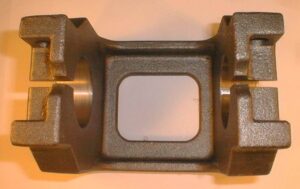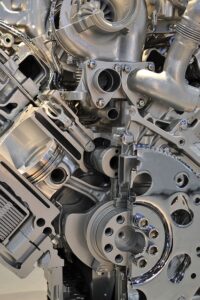A process that dates back more than 6,000 years, investment casting is one of the oldest types of metal-forming techniques. In the mid-20th century, manufacturers began using the technique to create products with close tolerances and minimal waste. Custom investment casting is ideal for creating complex parts for sensitive applications. For more than 20 years, Sinotech has combined precision with the affordability of overseas investment casting manufacturing to bring you a solution that lowers costs and meets your quality standards.
 Benefits of Investment Casting
Benefits of Investment Casting
- Lowers the cost of producing close tolerances for finer finish parts
- Often eliminates machining and multi-part assembly
- The initial tooling cost is inexpensive
- Infinite alloy choices
- Little to no waste of expensive alloys
- Great surface finishes
- Tight tolerances
- Fewer restrictions
- The freedom of design and ability to adopt new design parameters
- Flexible range of sizes
- Reliability
Use Custom Investment Casting When:
- You need a highly accurate, intricate shape: Investment casting manufacturers achieve tolerances of 0.05 percent of length. For small dimensions, tolerances of 0.15 percent are possible.
- A metal or alloy is difficult to fabricate or machine: A variety of metals are great for casting, including bronzes, aluminum alloys, stainless steels, tool steels, Stellite, Hastelloys and precious metals.
- You need a part you can’t manufacture using traditional techniques: Steel investment casting is ideal, for instance, when making airplane components or complex turbine blades that must withstand extreme temperatures and conditions.
- Creating safety-critical applications: Because of the great accuracy awarded by investment casting, many of ours are used in critical automotive applications in which we must carefully control malleability, tensile strength and metallurgy.
The Investment Casting Process

- Creating a pattern: Manufacturers use a computer modeling program to make a three-dimensional solid model. They then use stereolithography, a type of 3-D printing process, to transform the virtual model into one made of wax or a different material that melts.
- Mold making: Workers dip the wax pattern into refractory slurry several times to form a skin over the wax mold. For low-temperature melts, the slurry generally contains plaster of Paris (binder) and powdered silica (refractory). Higher-temperature melts use silica (binder) and sillimanite (refractory). Depending on the fineness of the desired finish, workers apply additional coatings of ethyl silicate and sillimanite. When a casting is heavy, specialists might place the mold in a large container and reinforce it with more slurry.
- Mold heating: Workers heat the pattern in an oven to melt away the wax.
- Mold preheating: Workers preheat the mold to about 1,000°C to remove any remaining wax, harden the binder, and ensure the mold completely fills with molten metal.
- Metal pouring: Pouring methods include using gravity, as well as pressure or vacuum conditions.
- Inspections: A specialist ensures the casted part is identical to the original design and contains no damage or weakness. Sinotech uses Magnetic Particle Inspection to look for inclusions and cracks. CMM confirmation and high-accuracy machining ensure your casting is dimensionally correct.
Investment Casting Applications
- Aerospace: The aerospace industry heavily relies on investment casting to create items such as satellites, aircraft door frames, hydraulic fluid system components, actuation systems, bearing cages, cargo systems, and landing and braking components.
- Power generation: Turbine blades, fuel nozzles, seal hardware, airboxes, combustion hardware, and turbulation tubes are made using investment casting.
- Military: The military uses investment casting for a variety of applications, including robotics, firearm manufacturing, missile components, electronic housings, armored vehicles, shipboard components, sonar and radar receivers, and heavy armament components.
- Automotive: Auto manufacturers use custom investment casting for unique and aftermarket parts, tools and accessories.
Sinotech has more than two decades of experience creating QS-9000 and ISO-certified investment castings. To reduce your risk, we produce and manage all castings on-site at our factories in the Pacific Rim, allowing us to pass the financial savings onto you. When you work with Sinotech for your investment casting needs, you receive the benefits of working with a domestic supplier. As an American company, we operate under U.S. law. Our strict quality control practices ensure the finished product meets your exact specifications. Explore the investment casting options available by contacting Sinotech today.
Watch our video about the investment casting process:
